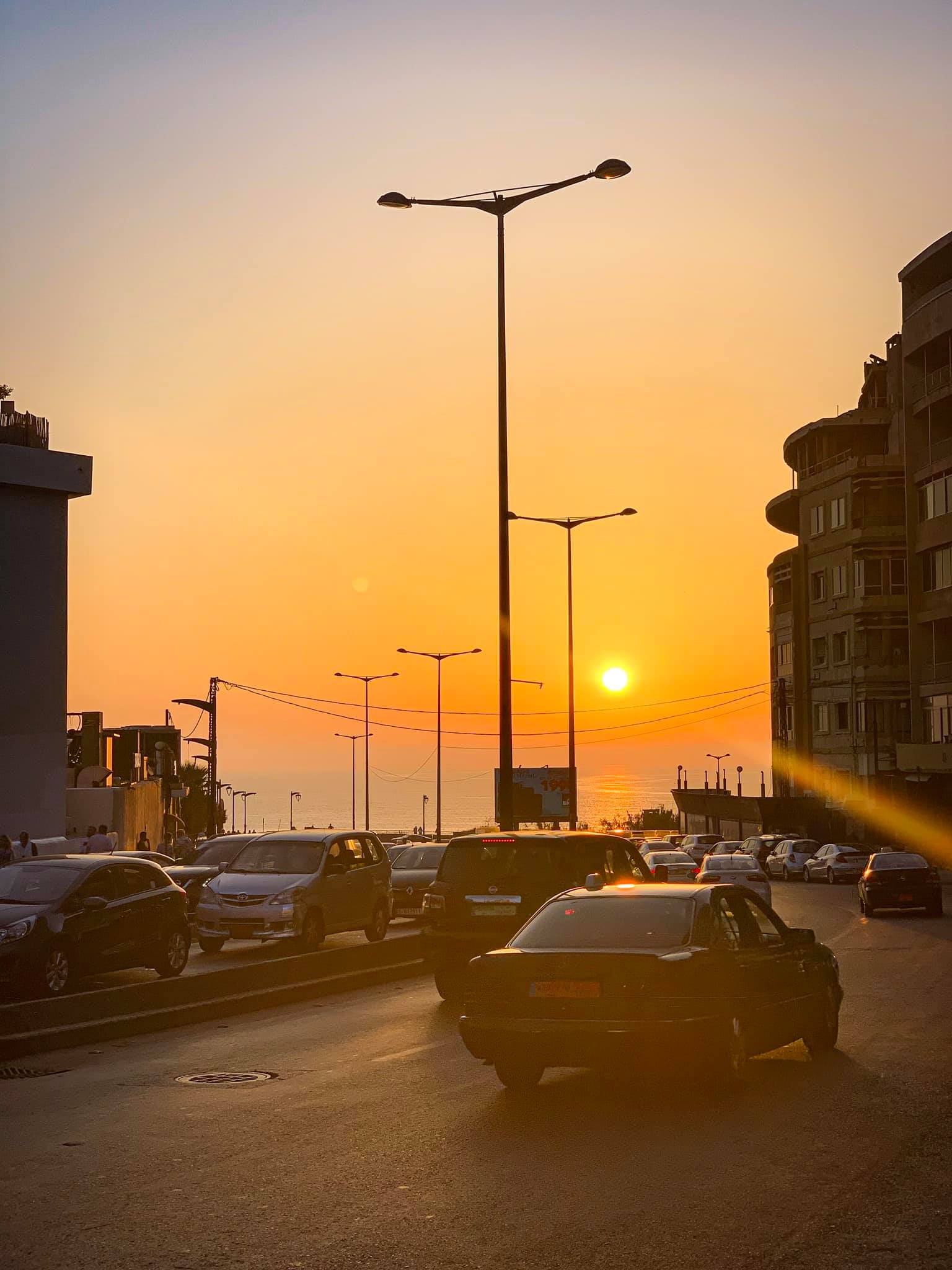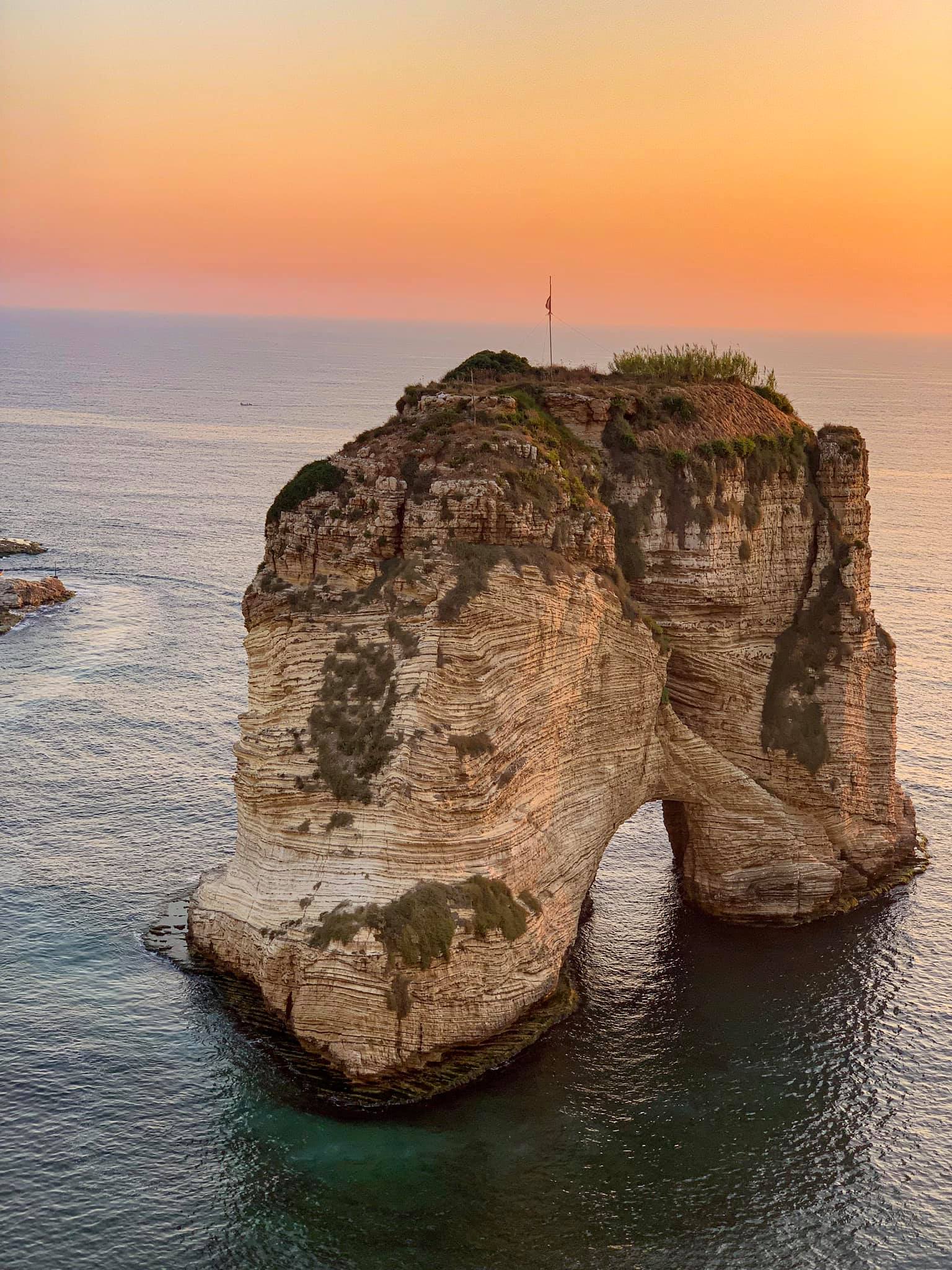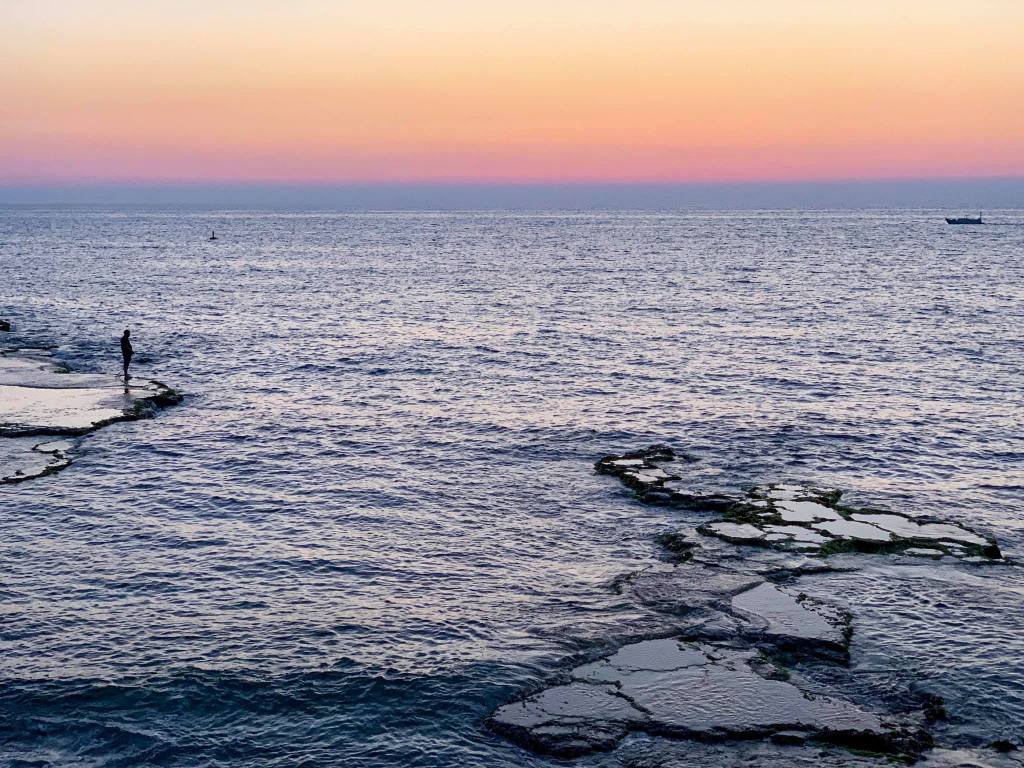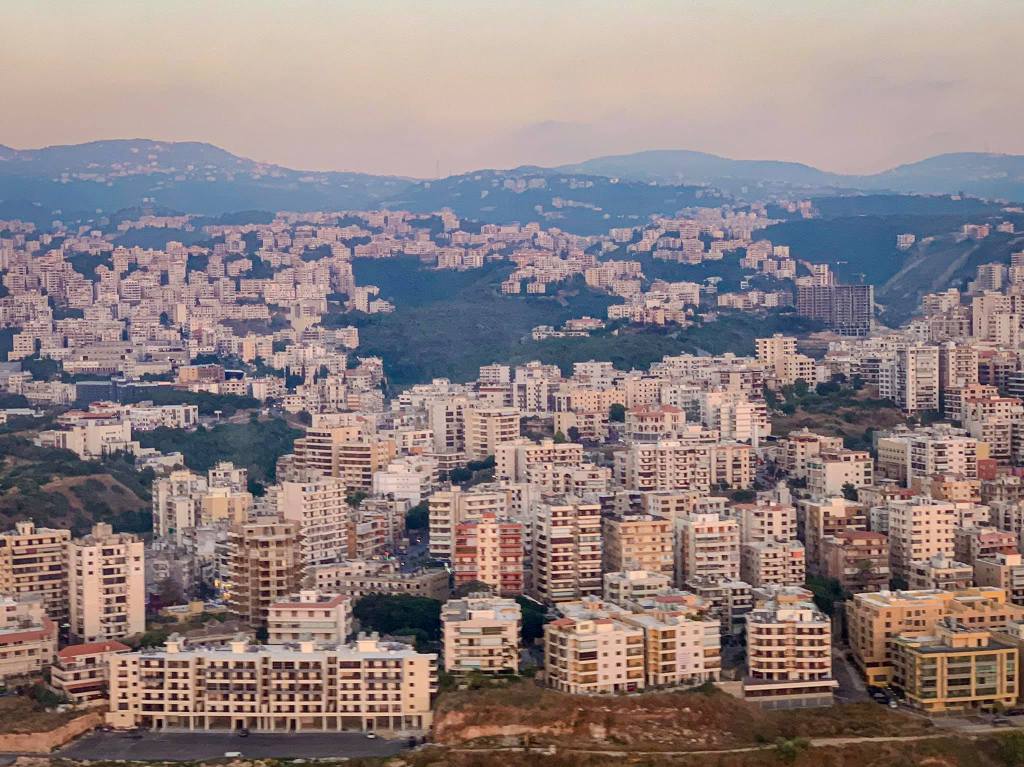Beirut, Lebanon – June 2019
I arrived in Beirut at 6pm local time for a two day meeting. It was my first time in the Middle East, and I had not really known what to expect. The half-Brazilian, half-Lebanese cab driver was chatty and managed to tell me an impressive amount about his whole life story in a relatively short period of time.
It was still daylight as I checked in to the hotel at 7pm. Thinking I’d try and find somewhere to watch the sunset, I glanced at Google maps and headed towards the Mediterranean Sea.
I walked straight toward Raouché Rock, also known as Pigeons’ Rock, a natural landmark off the coast of Raouché at Beirut’s westernmost tip. The timing was perfect. The sky was the warmest hue – well, I don’t really need to describe it, you can see it in the photos.
The rock of Raouché is claimed (by who – I’m not sure) to be the transformed remains of Cetus, the sea monster that the Greek hero Perseus killed to save Andromeda. Andromeda was the daughter of King Cepheus and Queen Cassiopeia. The queen typically boasted about how beautiful Andromeda was, which riled up all the sea nymphs. Naturally, Poseidon sent a sea monster to ravage the kingdom. Cepheus chained Andromeda to a rock off the coast after being told by an oracle that daughter-sacrifice was the only fix for his monster woes. Yeah, father of the year.
Perseus was passing by on his victorious return from slaying the gorgon Medusa when he spied Andromeda bound to the rock and immediately fell in love with her, because that’s what he was into apparently (chained women). He flashed the head at Cetus who turned into stone. Once freed, Andromeda married him (out of gratitude, I suppose). This was also not without some drama, as she was betrothed to her uncle, who thus fought Perseus for her at their wedding and also got the Medusa treatment for his troubles.
The usual telling of the myth places this story in Ethiopia though. Which is over 4000 kilometres away. But whatever, why let geography get in the way of a good story.
Of course, the tale of how Perseus obtained the gorgon’s head is perhaps more well-known (in case you need something to jog the memory, he used the mirrored shield given to him by Athena and Hermes to see a reflection of Medusa’s face, therefore avoiding petrification). As an aside to this aside, the winged horse Pegasus supposedly sprung from a drop of Medusa’s blood spilled at decapitation, as well as a winged boar that I imagine most people unversed in the classics have never heard of (including me, until I looked up the Pegasus origin story).
But I digress.
(If you can’t already tell, I’m a sucker for Greek mythology, particularly after reading Mythos by Stephen Fry, and Madeline Miller‘s The Song of Achilles and Circe. I highly recommend both of Miller’s books, based on Homer’s epics, the Iliad and the Odyssey, respectively. On that note, I’m now impatiently expecting Miller’s version of the myth of Perseus.)
Anyway.
Having sufficiently admired the rocks and the sunset sky, I walked north towards the Corniche, a seaside promenade lined with palm trees.
Wikipedia states that some of the palm trees have trunks pockmarked with bullet holes from the Lebanese Civil War. Had I known this at the time, I would have looked for them, but as it was my eyes were more drawn to the multi-coloured sky over the sea.
The Corniche was busy with people jogging, walking, cycling, or just standing around talking. The promenade was filled right down its length with families and couples strolling along the waterfront. There were plenty of people swimming in the Mediterranean, which I’m guessing would have been warm, and a few locals stood in the rockpools fishing.

The next day, after the day’s program had wrapped up, I headed to Zaitunay Bay at the eastern end of the Corniche for another sunset view.
At the marina, there was a sculpture of a Colt Python 357 Magnum revolver with its barrel tied in a knot and its muzzle pointed at the sky. Many will already know this isn’t the only example of this anti-violence symbol. There are more than 30 such sculptures in the world but this is the first in the Middle East, and the Arab world. The original sculpture, entitled Non-Violence, was created by a friend of John Lennon (protester against the Vietnam War, writer/singer of Imagine) after his murder, and sits outside the United Nations building in New York City as one of the world’s most recognisable non-violence and anti-gun symbols (and yes, I also have a photo of that one).
The sculpture is close to the Green Line that divided the city during the fifteen-year civil war. Also, Gandhi’s grandson attended and spoke at the inauguration in 2018.
The orange-pink sky was just as delightful to gaze at for a second evening. The sunsets also seemed to last for quite a long time.
My third and final Beirut sunset was seen from a plane window, ascending from Rafic Hariri International Airport. Beirut’s airport was renamed after Hariri, the prime minister, following his assassination by a suicide truck bomb in 2005.
In the end, it was a short trip, but long enough at least for me to fall a little bit in love with the city’s Mediterranean sunsets.
Beirut is the Elizabeth Taylor of cities: insane, beautiful, falling apart, ageing, and forever drama laden. She’ll also marry any infatuated suitor who promises to make her life more comfortable, no matter how inappropriate he is.
― Rabih Alameddine, An Unnecessary Woman
















You are such a pleasure to read Jon 🙂 everywhere comes alive!
LikeLike